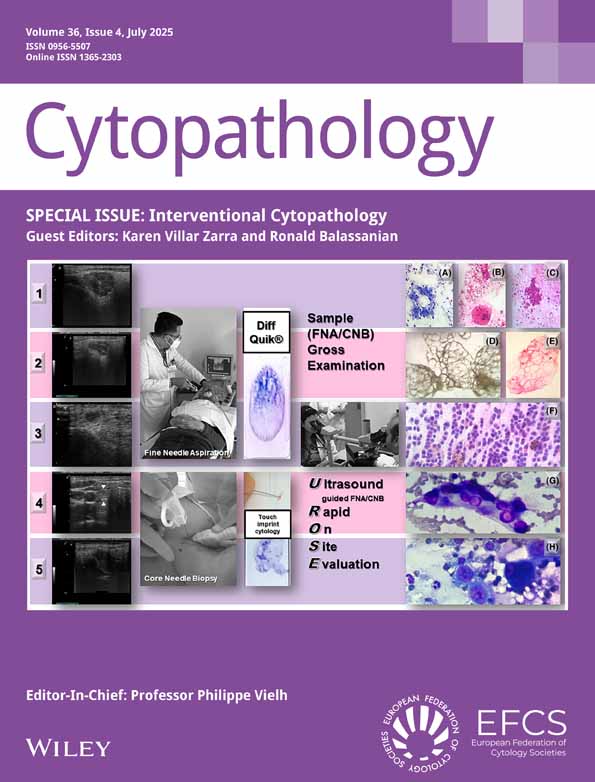The value of lymph node imprint cytodiagnosis: an assessment of interobserver agreement and diagnostic accuracy
Abstract
The value of lymph node imprint cytodiagnosis: an assessment of interobserver agreement and diagnostic accuracy
The aim of this study was to assess the reliability of cytodiagnosis of lymph node imprints without fixed tissue sections. One hundred randomly selected archival cases were used in the study. These air-dried May–Grünwald–Giemsa imprint slides were assessed independently and blind by three pathologists. Cases were assigned to one of four diagnostic categories: reactive changes, non-Hodgkin's lymphoma (NHL), Hodgkin's disease (HD) and secondary malignancy. Each broad diagnosis was compared with the ‘correct’ reviewed histological diagnosis to calculate interobserver agreement and diagnostic accuracy. The overall κ score (+0.59) was indicative of moderate agreement. The mean pathologist diagnostic accuracy was 78%, with complete agreement with the histological diagnosis in 61% of cases. The main diagnostic difficulties were in the distinction between reactive changes and NHL and distinguishing NHL from HD. Further diagnostic classification, e.g. typing of lymphomas and subclassification of Hodgkin's disease, was not found to be reliable using the imprints alone. With these limitations in mind, pathologists should be able to use lymph node imprints for cytodiagnosis in selected cases. The study also emphasized the utility of imprints as a corollary to the histology and as a tool for cytology training and continuing education.




